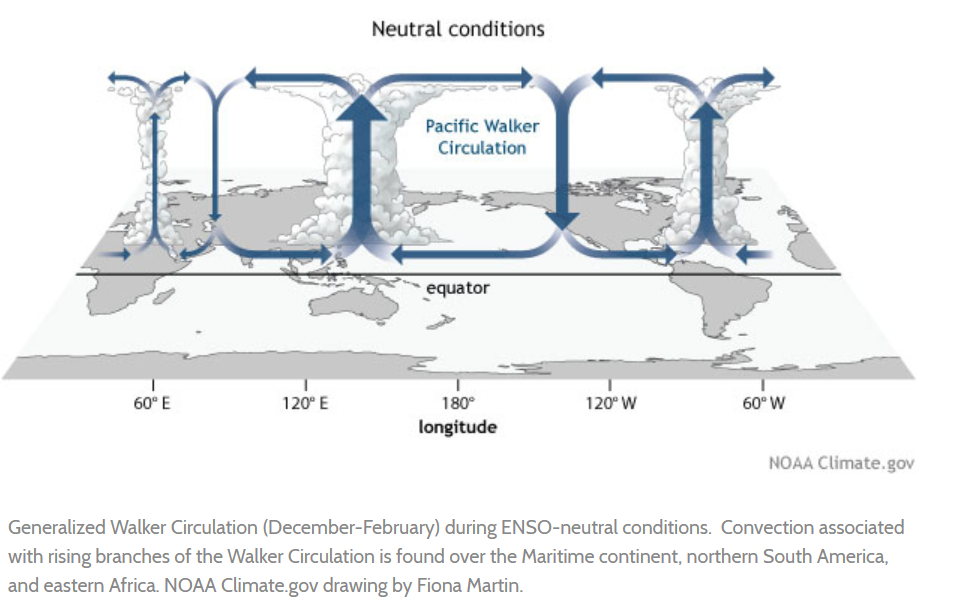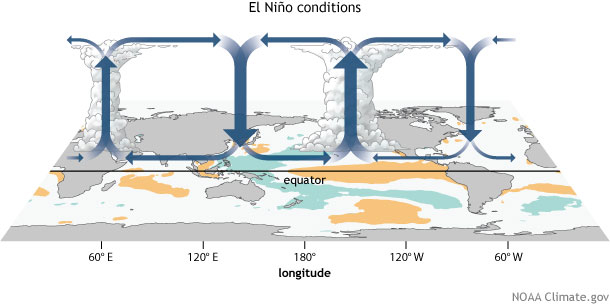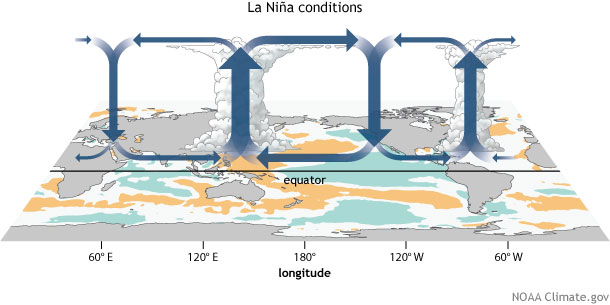
Walker circulation is basically a thermally direct circulation that relies on temperature differences to drive the rising and sinking branches.
Generic Conditions:
- Because of Earth's rotation and low Coriolis at the equator, the trade winds blow from East to West (constantly)
- This pushes surface water (because of frictional coupling between moving air and water with waves - this is really a hard problem to characterize) to the west side of ocean basins.
- The ocean water warms the entire way as its continually exposed to sunlight
- The end result is relatively warmer surface water in the west and cooler surface waters in the east. Above this large pool of warm water ( the Pacific Warm Pool), air rises driven by convection; above the cooler water in the east, air dries and settles near the surface.
- Temperature constrasts between land and ocean can amplify this circulation. So strongest upward branch over Australia.
Africa is the largest continental land mass that the equator goes through and hence the upward part of the circulation is minimzed there (and can sometimes just die there).
El Nino Conditions:

During El Nino, the warm pool of water usually in the western Pacific Ocean (specifically off the coast of Peru) begins to slosh to the east. As this warm pool moves east, the rising branch of the Pacific cell of the Walker Circulation follows, and the rest of the Walker Circulation get shifted around (air now is descending over Australia).
The reversal of the circulation generally means that less rainfall than average dominates the Eastern Pacific and South America. In contrast, increased rising motion enhances rainfall over the central Pacific Ocean (which usually strongly affects California) and even parts of equatorial eastern Africa.
La Nina

During La Nina events waters in the western Pacific are even warmer than normal and waters in the eastern Pacific are even colder. So the temperature gradient is now larger and this enhances the Walker Circulation.
Warm, moist air rises even more over the Eastern Pacific (Australia) and South America leading to above-average rainfall. In the eastern Pacific, where colder than average waters exist, an enhanced downward branch of the Walker Circulation helps to further reduce rainfall totals.
|